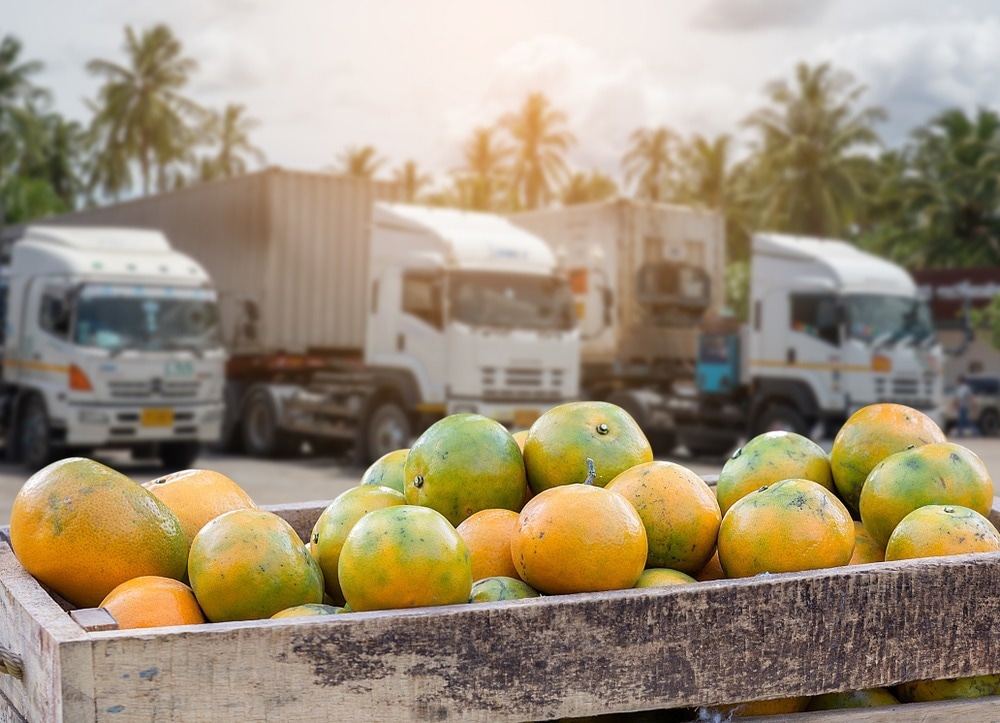COVID-19 broke the global food supply chain. Long queues to enter supermarkets and bar aisles once inside are some of the earliest images seen worldwide as the pandemic set in. Some parts of the world were particularly hit, with 73 million across 36 African countries falling into the category of acutely food-insecure as a result of the COVID-19 pandemic.

Image Credit: KAMONRAT/Shutterstock.com
For many people across Europe, food insecurity had never been an issue. Still, the uncertainty of being able to get the weekly shop will be a lasting memory of the pandemic for millions. The pandemic highlighted how fragile the global supply chain is.
There is also increased demand, following the pandemic, to ensure that food safety standards are observed. Food companies do not want to risk being the originator of a foodborne outbreak, given the current public opinion on contagious diseases. In addition, the growing complexity of the global food supply chain has made it more important to increase traceability to guarantee food safety.
Post-pandemic supply chain management and food safety will usher in a new era of digital tools. Sensors have been increasingly incorporated into supply chain management and safety to enhance their processes. Here, we look at the impact that sensors have on food logistics.
Sensors in Food Supply Chain Management and Food Safety
Once food leaves the farmer or manufacturer, a degree of control is lost. This loss of control can undermine the supply chain and food safety. Intelligent sensors are now being implemented to change this.
The rise of the Internet of Things (IoT) means that we now live in a connected world. Sensors play a huge role in this; they are used in many sectors to remotely collect information which is then shared via the cloud for further processing. Sensors are being increasingly incorporated into vehicles used to transport food, refrigerators used to keep produce at optimal temperatures (particularly during transit), and warehouses that store food. Data collected from these sensors help to reliably and accurately monitor conditions from “farm to fork” to ensure the quality and safety of food.
Verizon gives us an example of how their sensors work in supply chain management and food safety. An oyster shipment may be loaded with IoT devices to monitor conditions within the temperature-controlled truck that is being used to transport it. Thermal cameras collect images relayed back to the farmer so they can monitor the temperature profile of the shipment’s journey.
GPS data provides a live location of the shipment. Deviations from optimal temperature picked up by the sensors are used to trigger an alert to the farmer so that adjustments can be made. The farmer receives a final alert once the shipment arrives at its destination.
Sensors even relay data when vehicles on route with food cargo go off the grid. LoRa-enabled sensors, for example, are used to send information to a wide area network (LPWAN) gateway application following the detection of a temperature shift. This information is then transmitted to a network server, where it is then relayed to application servers or the cloud.
The information is then made available via a desktop or smartphone app. In the case of a power outage, battery-powered wireless-enabled IoT devices ensure that smart sensors continue to collect and relay data.
Global positioning systems (GPS) are a particular form of sensor that is being leveraged by food companies to monitor food as it travels nationally and internationally. Location information, in addition to data collected from other sensors, such as temperature and moisture sensors, can help inform a food company about the condition of the food in transit.
It is now common that information from various IoT-enabled solutions are sent automatically via a network to provide real-time data to determine both the quality and quantity of food arriving at a given location. This helps to ensure food safety, reduce waste, and enhances food security. It also helps to facilitate food traceability.
Looking Forward
Sensor technology allows for the monitoring of food from “farm to fork”. This helps those involved along the supply chain ensure optimum conditions and traceability, which increases food safety. It also reduces waste and gives real-time information on the quantity of food expected to arrive at a destination, thus ensuring food security.
Each year, 48 million Americans (1 in 6) fall ill from foodborne illnesses. The integration of sensors across the supply chain has the potential to reduce this by ensuring that food is maintained in optimal conditions.
Additionally, the disruption to the food supply chain caused by COVID-19 exacerbated food insecurity issues across the globe. Systems that reduce waste and provide accurate figures on how much food will be delivered to specific locations will be vital in the strategy to recuperate food security across the globe.
References and Further Reading
Barman, A., Das, R. and De, P.K. (2021) Impact of covid-19 in Food Supply Chain: Disruptions and Recovery Strategy, Current Research in Behavioral Sciences, 2, p. 100017. https://www.sciencedirect.com/science/article/pii/S2666518221000048.
COVID-19 has broken the global food supply chain. So now what? [Online]. Deloitte. Available at: https://www2.deloitte.com/ch/en/pages/consumer-business/articles/covid19-has-broken-the-global-food-supply-chain.html
How IoT sensors will help deliver safer, fresher food [Online]. Verizon. Available at: https://www.verizon.com/about/sites/default/files/humanability/iot-food-supply-chain.html
Post-COVID-19 Food Safety Will Introduce a 'New Era' of Digital Tools [Online]. Smart Sense. Available at: https://blog.smartsense.co/food-safety-regulation-in-the-post-fsma-era
Disclaimer: The views expressed here are those of the author expressed in their private capacity and do not necessarily represent the views of AZoM.com Limited T/A AZoNetwork the owner and operator of this website. This disclaimer forms part of the Terms and conditions of use of this website.